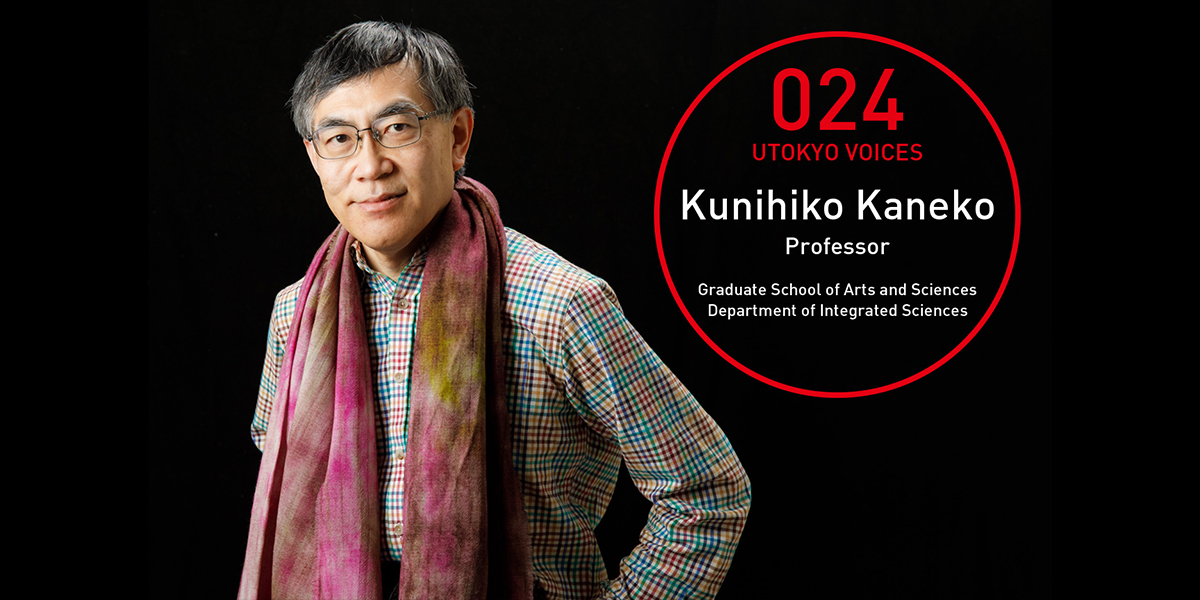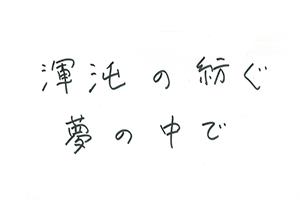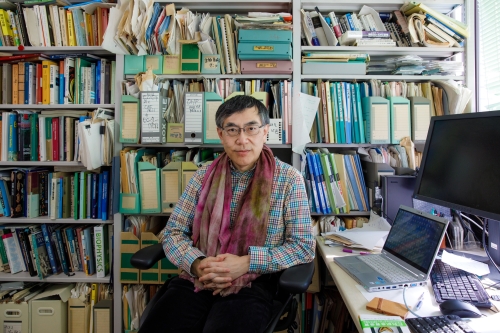Can the Laws of Physics Shed Light on Universal Life? | UTOKYO VOICES 024


Can the Laws of Physics Shed Light on Universal Life?
In his late teens, Kaneko got his hands on Sakyo Komatsu’s near-future science fiction novel entitled Tsugu no wa Dare ka (Who Will Succeed Humanity?). In this novel, there’s a scientist who studies a fictional field called “universal biology.”
“That excited me. I thought, ‘This field of study should actually exist.’”
The field of universal biology in this book involves taking a theoretical approach to the characteristics of universal life, or life that can arise anywhere in the universe, including on Earth, rather than the particular characteristics of life that has arisen on Earth by chance through a series of random events.
It’s understandable to observe and analyze lifeforms on Earth to find out what life is. However, biologists of all times and places have yet to come up with an answer to that question, so the concept of laws of life that could hold true in general throughout the universe seems like an absurd, impractical thing to study.
“Ever since I was in high school, I was taken in by the appeal of physics, namely being able to describe various phenomena in the world using simple laws. It was said, though, that living things are too complex for the theories of physics. However, I was convinced that life could be explained with physics since it exists because of the laws of physics.”
Many of those drawn to physics proceed in the direction of elementary particle theory, which explains the universe in more fundamental terms. That Kaneko proceeded along the relatively untrodden path of studying life can be attributed to his ingrained non-conformist attitude. However, although he studied theoretical physics at the University of Tokyo, the field of universal biology didn’t exist, so he had to explore it on his own. Continuing to explore it, he encountered chaos theory when he was a graduate student.
“At the time, chaos theory was not taken that seriously at the University of Tokyo, but I was a non-conformist, so it didn’t bother me,” he said with a laugh.
He does not look to break down complex things into elements but rather to find simple laws hidden within the entire complex system comprised of smaller elements. The day may come when this can be applied to research that identifies laws of physics in life. Absorbed in the study of complex systems, Kaneko has become an authority in this field after achieving great results at a lab in the United States.
The next step is to establish complex system biology that will deal with life within the science of complex systems. Taking life as “the phenomenon of being alive” rather than a group of substances, he hopes to explain the phenomenon using complex system science. That will require integrated research with other fields including biology and information science. The Research Center for Complex Systems Biology was established as a base for that initiative in 2008.
In 2016 the Universal Biology Institute was opened. At long last, the world’s first research organization with “universal biology” in its name was born.
“I think the future envisioned by Sakyo Komatsu is right about now.”
The non-conforming dreamer smiled after making that comment. The fantastical picture painted within the novel is now becoming reality. What rules of life will be discovered on this new stage?


This illumination box was a gift from a student in the lab for Kaneko’s 60th birthday. The pattern of the blinking of the lights at each lattice point changes chaotically, and the ones next to each other affect one another. The student wrote the program based on the coupled map lattice model introduced by Kaneko.


[Text: Konton no tsumugu yume no naka de (“Within a dream spun from chaos”)]: Copying the title of his own book, he replaced the borrowed word “chaos” with the kanji for the same. The concept (of chaos) holds a special place within the teachings of the Dao master, Zhuangzi. “I think a significant portion of my research comes from Zhuangzi. I guess the rest is from Sakyo Komatsu,” he says, laughing.

Kunihiko Kaneko
Kaneko completed his studies at the Graduate School of Science of the University of Tokyo in 1984. After becoming a Stanislaw Ulam Fellow at the Los Alamos National Laboratory, he took up his current position in 1994. He also serves as director of the Research Center for Complex Systems Biology, head of the Research & Education Platform for Dynamic Living States and director of the Universal Biology Institute. He continues his research with the aim of developing a basic theory for the phenomenon of life based on chaos theory and the physics of complex systems. His works include Kaosu no Tsumugu Yume no Naka de (Within a Dream Spun from Chaos) and Seimei to wa Nanika (What is Life?). Writer Toh EnJoe is an alumnus of the Kunihiko Kaneko Laboratory.
Interview date: January 16, 2018
Interview/text: Eri Eguchi. Photos: Takuma Imamura.






